General Image Quality
For these pictures, the cameras were reset to their factory default setting. Then, they were set to their highest quality recording setting. The pictures were then taken in Auto mode unless stated otherwise. Click on a thumbnail to view the full-size image. The crops below the thumbnails are 100%. All images are sRGB.| Fuji A330 | ||
 Click to enlarge. |
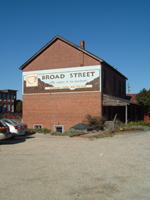 Click to enlarge. |
 Click to enlarge. |
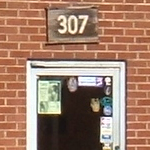 |
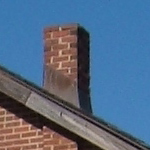 |
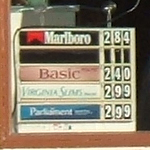 |
As the above crops demonstrate, the Fuji A330 has no major problems to speak of. We are pleased to see that the A330 is able to capture pictures with impressive detail without over-sharpening the images. Notice the lack of jaggies in these images. The images are well-exposed with a reasonable amount of saturation. Also, we are unable to spot any significant chromatic aberrations in any of the images. Overall, the Fuji proves to have very good image quality.
| Kodak CX7330 | ||
 Click to enlarge. |
 Click to enlarge. |
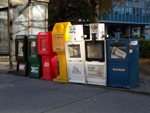 Click to enlarge. |
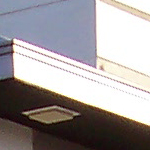 |
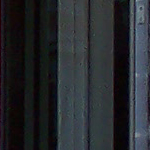 |
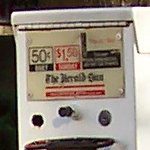 |
The Kodak CX7330 image quality is not too bad overall. The images all appear to be well-exposed with a decent level of detail. In addition, we couldn't find any chromatic aberrations. One of the main problems we noticed is that the CX7330 uses a bit too much sharpening, resulting in jaggies along lines. In fact, in the third crop, you can see how over-sharpening appears to result in the loss of detail. The other problem is the visibility of JPEG artifacts throughout the CX7330's images. These JPEG artifacts are a result of highly-compressed images in an attempt to lower the size of the files. We expect better-looking JPEGs from the highest quality option.
| Olympus D-540 | ||
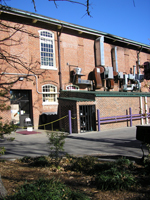 Click to enlarge. |
 Click to enlarge. |
 Click to enlarge. |
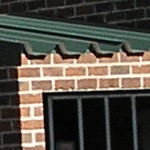 |
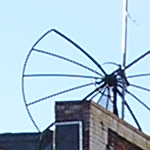 |
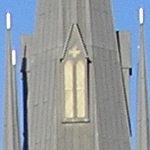 |
Unfortunately, it also shares the over-sharpening problem that we saw in the Kodak camera. This results in the common appearance of jaggies. The camera also appears to produce images with a relatively high contrast compared to the other cameras. In the 2nd and 3rd samples, the Olympus proves that it can capture some fine detail despite its over-sharpening problem.
Sometimes it is easy to look at the pictures from each camera and see which is best. Unfortunately, this is not one of those cases. Each camera is capable of producing some decent-looking pictures. All three cameras had no problem producing well-exposed and well-saturated images with no signs of chromatic aberrations. In fact, the differences between these cameras are rather subtle. We found that the Kodak and Olympus cameras both seem to have an issue with over-sharpening. Upon close inspection of the images produced by these two cameras, we found unsightly jaggies to be common. In the case of the Kodak camera, we also found JPEG artifacts caused by the camera's over-compression of its images. Overall, we prefer the look of the Fuji A330's images because of their smooth, yet detailed appearance.
Night Samples
| Fuji FinePix A330 | Kodak CX7330 | Olympus D-540 |
 (0.8 sec., f/2.8, ISO 100) Click to enlarge. |
 (0.5 sec., f/2.8) (Click to enlarge. |
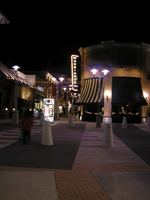 (0.5 sec., f/2.9, ISO 50) Click to enlarge. |
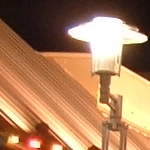 |
 |
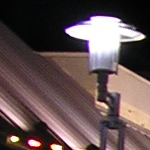 |
In this comparison of each camera's night setting, the Fuji A330 proves to provide the most detail. We can see some chromatic aberrations in the Kodak image along with some jagged lines ("jaggies"). The Olympus D-540 comes close to matching the quality of the Fuji. However, it falls short with more noise and an overall soft appearance. The Fuji camera also has the advantage of a 2 second maximum shutter speed, while the Kodak maxes out at 0.5 sec. and Olympus at 1 second.
Movie Mode
| Fuji A330 | Kodak CX7330 | Olympus D-540 |
 (320x240, 10 fps) Click to view. |
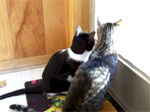 (320x240, 15 fps) Click to view. |
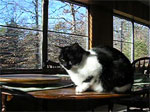 (320x240, 15 fps) Click to view. |
As you might expect from a $150 point-and-shoot, the video modes on these cameras aren't too spectacular. However, there are some noteworthy differences between them. For example, the Fuji camera is the only one that will limit the duration of the video clips (60 seconds at 320x240). The Kodak and Olympus cameras with allow you to record until you run out of space. Also, the Kodak camera is the only one that will record audio along with the video. The Olympus camera offers the most recording control. For example, it is the only camera out of the three that lets you utilize the optical/digital zoom (while recording), adjust white balance, and set exposure compensation.










16 Comments
View All Comments
Jeff7181 - Friday, December 31, 2004 - link
Nice article... would have been nice to see it BEFORE the holidays though ;)stephencaston - Friday, December 31, 2004 - link
#4,Unfortunately, when it comes to digital cameras, it is impossible to cover every camera at a specific price point. We had to make choices when picking which cameras to use and ended up choosing three cameras at $150 with very similar features to make the comparisons more relevant.
I did not mean to imply that this article will determine the best camera at $150. The article was meant to compare these three cameras to each other. I have amended the title accordingly to reflect this.
We always encourage people to do as much research as possible before buying a camera. There are so many different things to consider when reviewing digital cameras and each review site focuses on different areas.
PrinceGaz - Friday, December 31, 2004 - link
I'd take the Minolta DiMAGE X31 over any of the cameras reviewed any day; it's a lot more compact than them which is what many people desire when out and about, is reported to give a good picture for it's price and size, has lots of features, and at $150 is just as cheap as them. My DiMAGE X20 is a lovely little camera that does everything you could ask of it, and from what I've read the X31 makes a good thing better.I will reiterate a point I made when digicam reviews first appeared on AT, which is that unless you can review *every* model in depth to find which is the best in that category, then you are doing a dis-service to your readers by potentially not even looking at what might be the best camera in that range.
Specialist digicam websites review all cameras so that they can give an informed opinion on any new models, even if that means buying one themselves like AT might do for a computer product that free review samples weren't available for. What AT is doing with digicam reviews is just picking two or three models out of the many available and saying one of them is the best, when better ones you didn't even look at are available. AT does excellent reviews of computer components, but I'm afraid you'd have to be a fool to only use your recommendations when buying a digicam.
orenb - Friday, December 31, 2004 - link
The best digital camera at this price point is the Ricoh Caplio RX. 28-100mm zoom. Metal body. Almost no shutter lag. These three don't even come close.Prog.
Joony - Friday, December 31, 2004 - link
The Canon A400 should be in this review...cosmotic - Thursday, December 30, 2004 - link
Again, Kodak EasyShare is turned into an ad link and blends into the background of the table cell.